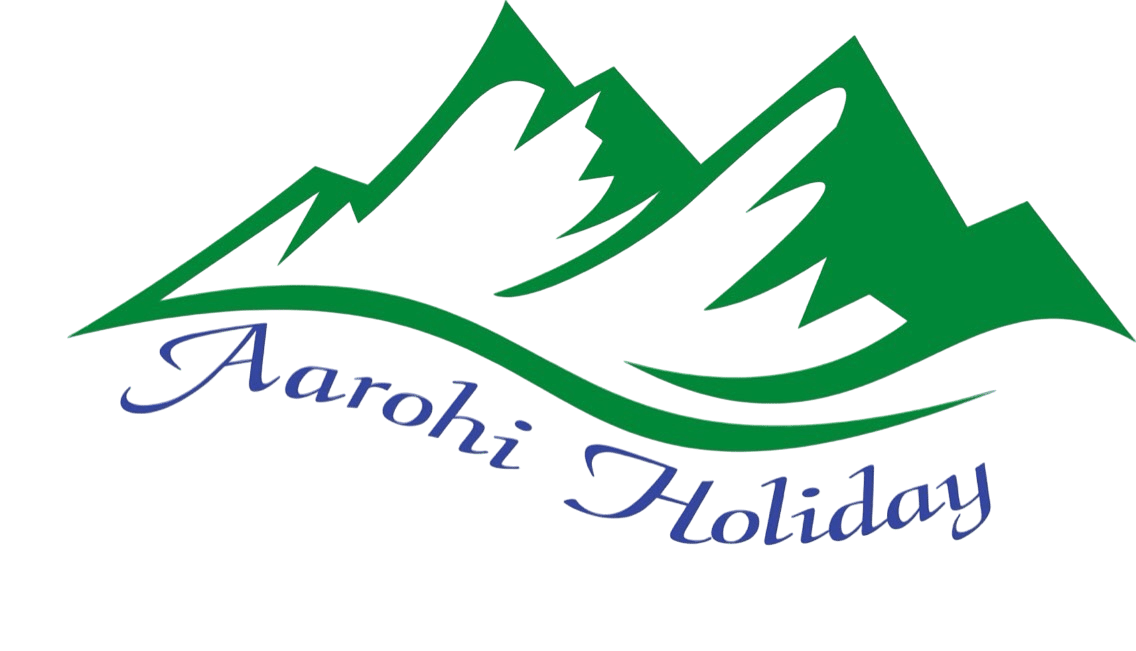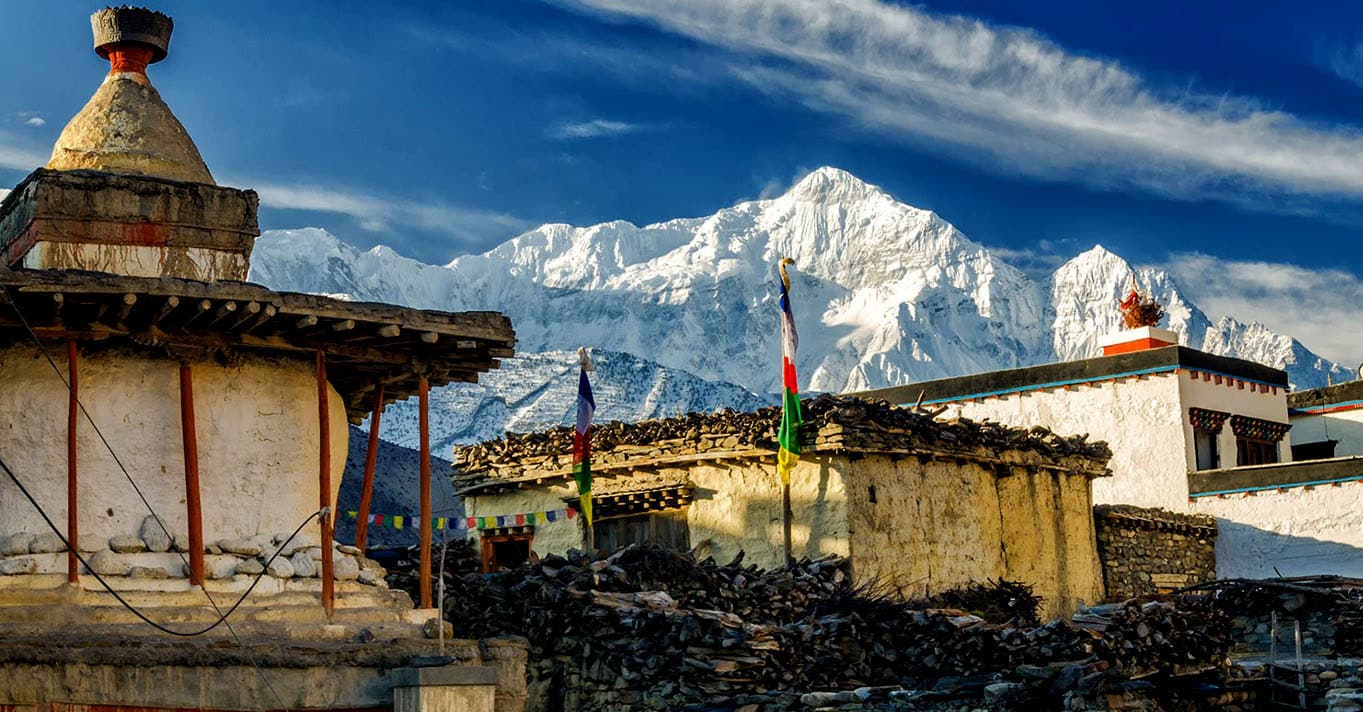Accommodation during Jomsom Muktinath Trek
- In Kathmandu and Pokhara we provide comfortable accommodation in 3-star hotels with breakfast on a twin-sharing basis.(Private room accommodation can be arrange at an extra cost)
- During the trek, we provide comfortable teahouse accommodation on a twin-sharing basis. Hot showers, Wi-Fi, and device charging are available at an additional cost.
Meals and Drinking water on Jomsom Muktinath Trek
During the Jomsom Muktinath Trek, you will be provided with three nutritious meals a day—breakfast, lunch, and dinner—served at local teahouses along the route. All meals are ordered from the menu and typically include a variety of options such as traditional dal bhat (rice, lentils, and vegetables), Tibetan bread, noodles, soups, pasta, pancakes, and eggs. While the food is simple, it is freshly prepared and offers the energy needed for trekking through the varied terrain of Mustang and the lower Annapurna region.
Staying hydrated is essential, especially at higher elevations like Muktinath (3,749m). Bottled water is available for purchase at most stops, but we recommend using reusable water bottles to reduce plastic waste. Our guide will carry water purification tablets or drops to ensure you have access to safe drinking water throughout the journey
Required Permits for the Jomsom Muktinath Trek
For the Jomsom Muktinath Trek, you’ll need the Annapurna Conservation Area Permit (ACAP) and a TIMS Card. All permits are included in your package, and we handle the paperwork so you can focus on enjoying the trek.
- Annapurna Conservation Area Permit (ACAP): NPR 3,000 per person.
- Trekkers’ Information Management System (TIMS) Card: NPR 1,000 per person
Best Time for Jomsom Muktinath Trek
The best time for the Jomsom Muktinath Trek is from March to May (spring) and September to November (autumn). Spring brings blooming rhododendrons, vibrant landscapes, and pleasant temperatures, while autumn offers clear skies, stable weather, and excellent mountain views.
It’s best to avoid the monsoon season from June to August, as heavy rainfall can make trails slippery and streams difficult to cross. Winter (December to February) is colder, especially in higher regions, but trekking is still possible for those prepared for chilly conditions and fewer crowds.
Jomsom Muktinath Trek Difficulties
The Jomsom Muktinath Trek is a moderate trek that does not require technical climbing skills, making it suitable for beginners with a reasonable level of fitness. Trekkers should be prepared for daily walks of 5 to 6 hours across varied terrain such as rocky trails, open valleys, and dry, dusty paths. One of the unique challenges of this trek is the strong winds around the Jomsom area, which can make walking more strenuous, especially in the afternoon.
The trek reaches an altitude of 3,749 meters at Muktinath, where some trekkers may feel mild symptoms of altitude sickness. While the overall elevation is lower than other high-altitude treks in Nepal, it’s still important to stay hydrated and take your time acclimatizing. With basic preparation, proper gear, and mental readiness, most trekkers find this journey rewarding and manageable.
Altitude Sickness and Prevention on the Jomsom Muktinath Trek
At Aarohi Holiday, your safety is our highest priority. Our experienced guides are well-trained in altitude awareness, first aid, and emergency protocols. On the Jomsom Muktinath Trek, although the maximum altitude (3,749 meters) is lower than many high Himalayan treks, we still follow a gradual ascent and closely monitor every trekker for signs of Acute Mountain Sickness (AMS).
Symptoms such as headache, nausea, dizziness, or shortness of breath are taken seriously. If AMS is suspected, our team responds immediately with appropriate steps like rest, hydration, or descent. In rare cases, emergency evacuation may be arranged. We also provide a pre-trek safety briefing to ensure you’re fully informed and encourage regular communication with your guide throughout the journey. With proper precautions and expert support, this trek is a safe and enriching experience.
Travel Insurance for Jomsom Muktinath Trek
We strongly recommend that all trekkers have comprehensive travel and medical insurance before beginning the Jomsom Muktinath Trek. While the altitude is moderate compared to other Himalayan treks, the route still passes through remote areas where access to medical care is limited. In case of emergencies, especially those requiring helicopter evacuation, having the right insurance is essential.
Your policy should include coverage for high-altitude trekking, medical treatment, personal accidents, and emergency evacuation. It’s also wise to ensure your insurance covers trip cancellations, lost or delayed baggage, and other unforeseen situations. With the proper coverage in place, you can enjoy your trek with confidence and peace of mind.
Jomsom Muktinath Trek Itinerary
The Jomsom Muktinath Trek begins in Kathmandu with arrival at Tribhuwan International Airport and a day of sightseeing around the Kathmandu Valley. From there, you’ll drive to Pokhara before taking a scenic flight to Jomsom, the starting point of the trek.
The trail winds through traditional villages like Kagbeni and Marpha, passing apple orchards, mani walls, and monasteries, while gradually ascending to the sacred Muktinath Temple. From Muktinath, the trek descends through charming villages including Marpha, Ghasa, and Tatopani, before reaching Ghorepani and climbing Poon Hill for panoramic sunrise views over the Annapurna and Dhaulagiri ranges.
The trek concludes with a return to Pokhara for sightseeing around the valley and a drive back to Kathmandu. This journey combines cultural experiences, natural beauty, and moderate trekking challenges, offering a perfect introduction to the Annapurna and Mustang regions for adventurers seeking both spiritual and scenic experiences.
Jomsom Muktinath Trek Cost
The cost of the Jomsom Muktinath Trek depends on the trek duration, season, and level of service. Our 13-day Jomsom Muktinath Trek is priced at USD 1,100 per person, which includes all essential services from your arrival in Kathmandu to your departure day.
This price is based on a minimum of one participant. For groups, we offer a 5% to 10% discount, and the group leader treks free. It’s a great value for an unforgettable cultural and scenic journey through the Mustang and Annapurna regions
Important Notes for Jomsom Muktinath Trek
- The journey from Kathmandu to Pokhara by road takes about 7 hours. Alternatively, you can opt for a flight, which takes around 20 to 30 minutes and costs approximately USD 90
- This itinerary includes travel by local bus to Pokhara. If you prefer to travel in a private jeep, feel free to inquire about the additional cost
- The flight from Pokhara to Jomsom, which offers stunning views of the Himalayas, is included in the trek package
- Porters can carry up to 20kg, but we recommend packing under 10kg since we provide one porter per two trekkers. A duffle bag for your gear will be provided
- Meals are included on the trek, but extra charges apply for hot showers and charging devices at teahouses/lodges
- Meals are not included in Kathmandu or Pokhara
- Drones require hard-to-get permits, so it’s best not to bring.
Fitness Preparation for the Trek
The Jomsom Muktinath Trek is a moderate-altitude journey that requires a basic to good level of physical fitness. While it does not reach extreme elevations, the trek involves several days of walking on varied terrain, including uphill and downhill sections, which can be physically demanding. Regular walking, hill hikes, and cardio exercises such as jogging, cycling, or swimming will help build the stamina needed for this trek.
With proper preparation and guidance from our experienced local team, most healthy trekkers can comfortably complete the Jomsom Muktinath Trek while fully enjoying the breathtaking landscapes, charming villages, and spiritual experiences along the route.
A Typical Day on the Trail
A typical trekking day on the Jomsom Muktinath Trek lasts about 4 to 6 hours. You’ll start after breakfast and walk through scenic trails, traditional villages, apple orchards, and mani walls. The altitude gradually changes each day, with the highest point at Muktinath (3,850 meters) and other stops ranging from 1,200 to 3,210 meters.
Along the way, you’ll enjoy breathtaking views of the Annapurna, Dhaulagiri, and Mustang landscapes. Breaks are taken for lunch and short rests to maintain energy, interact with locals, and fully experience the cultural and natural beauty of the region.
Arrival Instruction
Upon your arrival at Tribhuvan International Airport, our company representatives are stationed to welcome you to the country. We request you to carefully look for your name being held by our representatives following the events upon landing. The representatives are responsible to escort you to your hotel in Kathmandu. You will see men offering you to carry luggage and take you to your destination as you exit the airport. We request you pay no attention to these people and follow the designated representatives and follow their instructions. You will also need to keep an eye on your luggage and belongings to avoid any complications.
Nepal Visa Entry Procedure
For entry into Nepal, there are visa requirements everyone (except Indian nationals) must complete before being allowed to pass through immigration. This is for air travel as well as overland transportation. Most visitors may obtain a visa to enter Nepal, however, there are exception
Three options are available for entry
- 15-day single entry: US $30
- 30-day single entry: US $50
- 90-day multiple entries: US $125
Please have a passport valid for at least 6 months from the time of entry, and have cash ready, preferably in US dollars, though there are other currencies Nepal Immigration accepts. If you are entering via overland, you must have US cash and 3 passport photos. For arrival by air, the kiosks at the airport take your picture for you.
For the most up to date list of exceptions for visa on arrival or to obtain the most current visa information, visit the Nepal Department of Immigration website.



